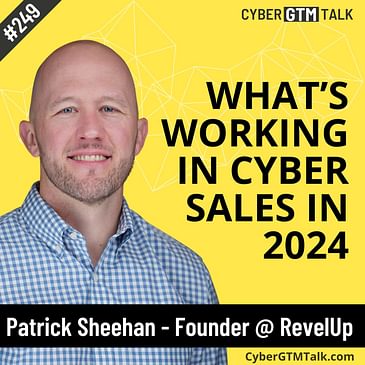Are you seeing results from your efforts to find warm leads for your business development reps in the first half of 2024? How are your authentic marketing messages driving trust and engagement in these recent months? Are you re-evaluating the role of SDRs and BDRs in an AI-driven landscape right now?
This episode addresses these current challenges and more, providing valuable insights for sales and marketing leaders looking to accelerate their revenue growth in 2024.
In this conversation we discuss:
👉 The challenges and successes in finding warm leads and leveraging market intelligence in 2024.
👉 How authenticity and trust in marketing and leadership are impacting sales effectiveness this year.
👉 The evolving role and current effectiveness of SDRs/BDRs in outbound marketing amid technological shifts.
About our guest:
Patrick Sheehan is a seasoned sales leader and the Chief Revenue Officer (CRO) and Founder at RevelUp and CRO at Network to Code. With extensive experience in cybersecurity sales, Patrick brings invaluable insights into pipeline management, deal qualification, and the importance of customer-centric strategies in marketing and sales, especially in the evolving market of 2024.
Summary:
Join us for an enlightening episode with Patrick Sheehan, where we dive into practical steps and recent successes in improving cybersecurity sales strategies, the importance of authenticity in marketing, and the evolving role of SDRs and BDRs in 2024. Don't miss out on actionable insights that can help you refine your strategies and drive your business forward this year. Listen to this episode now and start transforming your sales approach.
Connect with Patrick Sheehan:
Patrick Sheehan's LinkedIn
Follow me on LinkedIn for regular posts about growing your cybersecurity startup
Want to grow your revenue faster? Check out my consulting and training
Need ideas about how to grow your pipeline? Sign up for my newsletter.




